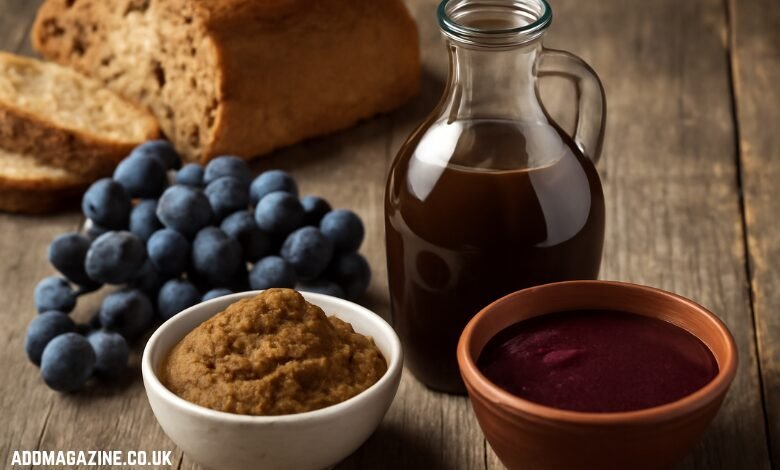Musté is a term used in various contexts across different cultures, but it is most commonly associated with a particular culinary tradition or agricultural practice. In this article, we will delve into the origins, uses, and cultural significance of Musté, breaking down what it is, where it comes from, and how it has evolved over time.
What Is Musté?
At its core, Musté refers to a specific process or ingredient tied to the preparation of certain dishes or products. In some contexts, it can describe a fermented substance, while in others, it might refer to an aromatic blend used in cooking. The exact definition and application of Musté depend largely on regional or cultural interpretations.
The most common association of Musté is found in the culinary world, especially within regions that have strong agricultural and fermentation traditions. It is often used to describe a fermented paste or paste-like substance that serves as a base for sauces, stews, or beverages. Some versions of Musté are derived from fermented grains, while others are based on fruits or legumes. This makes Musté a versatile component in many recipes.
In certain parts of the world, Musté is also a reference to a specific type of beverage. Often, these beverages are made from fermented fruit or grain mixtures that are combined to create a tangy, sour, and often slightly sweet drink.
Origins of Musté
The origins of Musté can be traced back to ancient agricultural practices. The precise origin is difficult to pinpoint due to the widespread use of fermentation in early food preparation, but it is believed that Musté’s roots lie in the regions of Asia and Africa, where fermentation was employed to preserve foods and create alcoholic beverages. These early fermentations involved simple techniques using naturally occurring yeasts and bacteria to break down sugars into alcohol or acid.
Musté likely evolved as a regional adaptation to specific agricultural conditions. The process of fermenting food or drink for preservation and flavor development was a necessity in areas with abundant natural resources, such as grains, fruits, or tubers. For example, in some cultures, Musté was used to make sour beverages or fermented porridge that would sustain people during long periods when fresh food was unavailable.
As cultures interacted through trade and migration, the use of Musté spread and evolved. Over time, variations of Musté appeared across different cultures, each adding its own unique twist to the process, from the ingredients used to the fermentation techniques employed.
Regional Variations and Uses
Musté, depending on the region, takes different forms. In some cultures, it is a fermented paste used as a condiment or cooking base. In others, it is a fermented beverage, sometimes used as a traditional drink during festivals or ceremonies. Let’s explore the different ways Musté has been used across regions:
- In East Asia: Some cultures use Musté as a base for stews or as an ingredient in making fermented pickles. The fermentation process imparts a unique tangy flavor to foods, which is highly prized in many Asian dishes. Musté’s distinct sour taste makes it an excellent complement to salty or spicy foods.
- In Africa: Musté has also found its place in traditional African cuisines. In many African countries, Musté is used to create a thick, fermented paste from local grains such as millet, sorghum, or maize. This paste is often incorporated into soups and stews, adding both flavor and texture to the dish. In some regions, Musté is also fermented to create traditional alcoholic beverages that are consumed during special celebrations or ceremonies.
- In Europe: In Mediterranean regions, Musté is often made from grape must, a byproduct of wine production. This is particularly significant in countries like Italy, where the process of fermenting grape must to produce beverages or flavoring syrups is a long-standing tradition. This form of Musté, known as “must,” is sweet and has a rich, deep flavor that can be used in a variety of dishes, including marinades and desserts.
- In the Americas: The Americas have also adopted their own variations of Musté, particularly in areas where indigenous fermentation methods have thrived. In these regions, Musté can refer to a fermented fruit drink or paste that was traditionally made with fruits such as guava or passion fruit. These beverages can vary in their fermentation time, yielding drinks with varying levels of alcohol and acidity.
Cultural Significance of Musté
Beyond its practical uses in the kitchen, Musté has cultural significance, especially in regions where fermentation plays a critical role in preserving food. For example, Musté has been used for centuries in certain parts of Africa and Asia as a means to preserve food, ensuring its availability through the changing seasons.
In addition, Musté’s role in festivals and ceremonies cannot be understated. In some cultures, it is seen as a symbolic representation of the connection between people and nature. For instance, in parts of Africa, the process of making Musté is sometimes accompanied by prayers or rituals that honor the ingredients and the agricultural cycle. Similarly, Musté beverages are sometimes served during celebrations to mark seasonal transitions or to offer guests a special treat during important events.
The Benefits of Musté
Musté is not just valued for its taste; it also offers several health benefits, particularly due to the fermentation process. Fermentation increases the bioavailability of nutrients in foods, making it easier for the body to absorb vitamins and minerals. Additionally, fermented foods like Musté are known to promote gut health by introducing beneficial bacteria into the digestive system.
- Probiotic Properties: Musté, like many other fermented foods, contains probiotics. These are beneficial microorganisms that support a healthy gut flora, improving digestion and overall gut function. The bacteria introduced through fermentation can help balance the microbiome and improve immunity.
- Nutrient Density: The fermentation process enhances the nutrient profile of the ingredients used to make Musté. Grains, fruits, and vegetables used in the production of Musté can have increased levels of vitamins, minerals, and antioxidants, which are important for maintaining overall health.
- Digestive Health: Musté can aid in digestion due to the presence of enzymes produced during fermentation. These enzymes break down complex sugars and fibers, making it easier for the body to process the food.
- Better Preservation: Fermentation also extends the shelf life of foods, making Musté a practical and economical choice for preserving food, especially in regions with limited access to refrigeration.
How Musté is Made
While the specific preparation of Musté varies depending on the region and the ingredients, the basic steps are similar across most versions of the process. The following is an overview of how Musté is typically made, whether it is in the form of a paste, beverage, or sauce:
- Selecting the Ingredients: Depending on the intended use of Musté, the base ingredients can vary. For a fermented paste, grains like maize or millet might be chosen, while fruits such as grapes or tropical fruits are common for fermented beverages.
- Fermentation: The ingredients are then fermented, usually for several days to weeks. In the case of grains, the mixture is typically left to ferment at room temperature, allowing the natural microbes present to begin the fermentation process. In the case of beverages, fruit or sugar mixtures are combined with yeast to start fermentation.
- Monitoring: Throughout the fermentation process, the mixture is regularly checked to ensure it is fermenting correctly. If necessary, additional ingredients or spices might be added to adjust the flavor.
- Straining and Bottling: After fermentation, the mixture may be strained to remove any solid particles, especially for liquid Musté. If making a paste, the product may be mashed or blended to achieve the desired consistency.
- Storing: Once the process is complete, Musté can be stored in containers. It is often kept in cool, dark places to maintain its flavor and extend its shelf life.
Conclusion
Musté is a fascinating and multifaceted ingredient or process, rooted in ancient traditions of food preservation and fermentation. From its humble beginnings as a tool for sustaining populations during lean months to its modern use in a wide variety of cuisines, Musté has evolved into a respected and versatile element in global culinary practices. Its cultural, nutritional, and practical significance ensures that Musté will continue to be enjoyed for generations to come, offering a taste of history and tradition in every bite.




